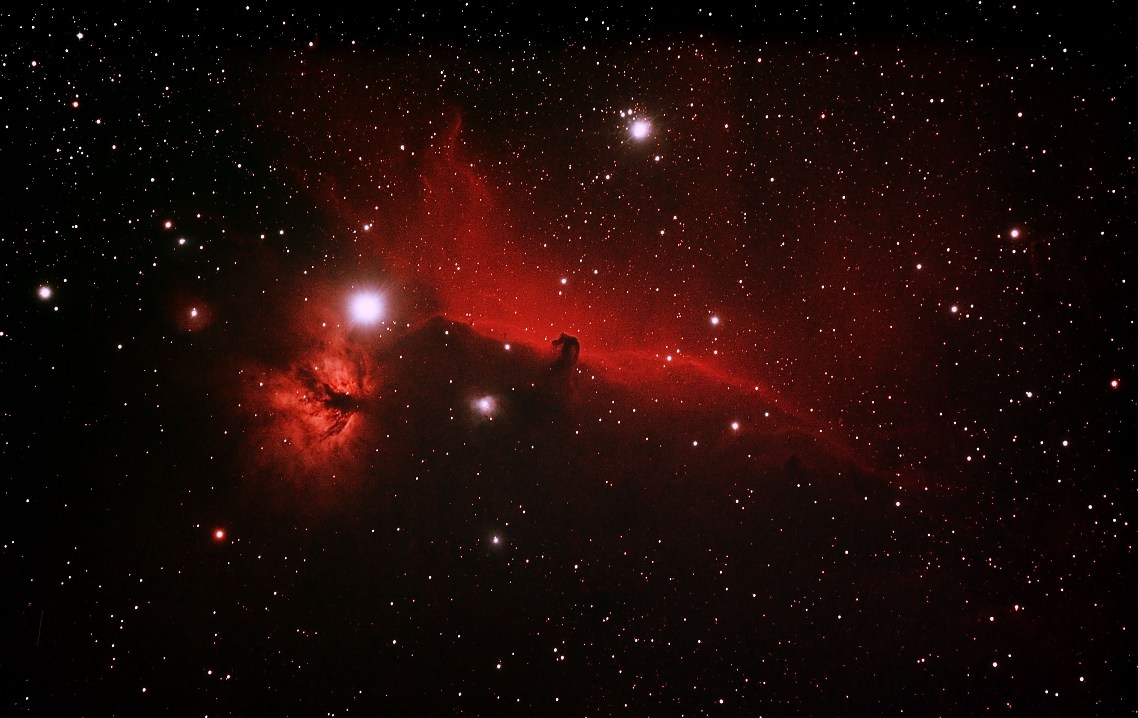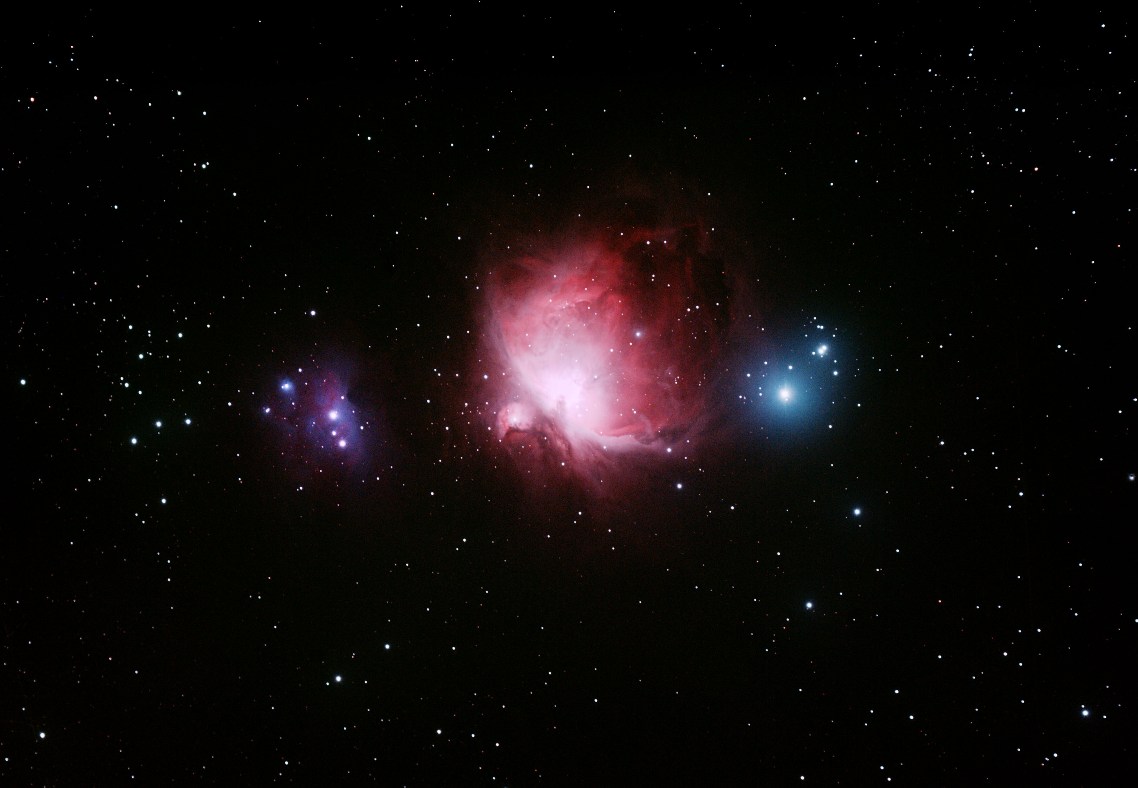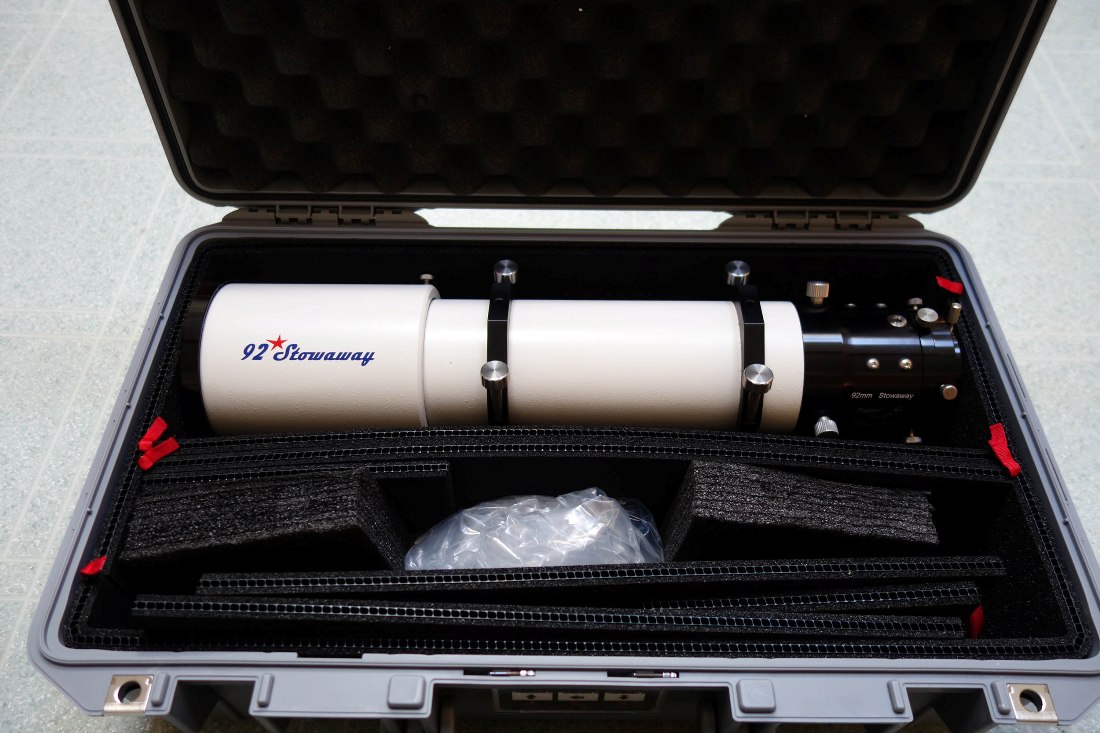
Updated 1/22/19, 1/23/19, 1/30/19, 2/17/19
1) Astro-Physics Stowaway f/6.65 (2018 version) 1/22/19, 1/23/19, 1/30/19, 2/17/19
(92 mm f/6.65 apochromatic refractor, OTA, case, rings, choice of sliding bar, $3490, field flattener, $450, focal reducer, $450.)
In the fall of 2018, I realized the dream of a lifetime. At the ripe old age of 54, I got accepted into a Master's degree program at Dartmouth. I had some ideas about literary studies and music that I wanted to pursue. This would mean a major shift in my lifestyle. I would have to quit my job and thus eliminate my income, commute 86 miles each way to Hanover NH, and block out two years of my life. Around the same time, my neighbor, who built part of my house, came over and told me that parts of the exterior needed to be repaired. As this is not a man prone to exaggeration, I knew the house probably needed it. If you own a house, you know home repair is never cheap.
Around this time, I got a notification from Astro-Physics that my name came up on Stowaway waiting list.

The Stowaway, in its case
The Stowaway waiting list?!
I put my name on the waiting list in 1999 after seeing the previous version of the Stowaway at a friend's house. Shortly after I signed up, Astro-Physics announced they were no longer producing the scope. Like most others who were on that waiting list, I forgot all about the telescope. In 2018, A-P announced they were re-introducing the scope, and opened up the waiting list again. I remember that day. My inbox got flooded with emails, most proclaiming the same message: "They're making Stowaways again!!" The list opened up at 2 PM, and I got on the waiting list around 7 PM that night. Again, I forgot about the telescope.
I stared at the email, scarcely believing it. A-P wanted a down payment of 50% for the scope, with the balance due just before shipment. If you were me, knowing you were due for high expenses and no income for years, would you have spent $4000 on a telescope?
Like many people, I possess an ability to rationalize almost anything, if I want it enough. How's this one? If I get into financial trouble during the next two years, I could always sell the scope and get my money back...
Astro-Physics is often credited for creating the market for the 90 mm class apochromatic refractor. Before it came along, a "90 mm telescope" probably meant you had a Questar or an ETX. Most of us never knew we needed such a telescope, until they released one. 90 mm of aperture neatly splits the difference between the 3" class (which is often too small to do serious work) and the 4" class (which start to get heavy and expensive.) The idea is so simple, it makes you wonder why no one had thought of it before. Reality check: If you've been hankering for a Stowaway, I should point out that TeleVue makes a fine TV85, which is half the price, and likely in stock for delivery at your local telescope retailer. I cannot recall ever speaking to an unhappy TV85 owner; you and it could sail off into the sunset together and never look back. Another option is to seek out a used TMB92. Astro-Tech came out with a 90 mm apo a while back but it came and left so quickly I never got a chance to see it. Orion has an EON85 that I haven't seen. And as of this writing, Astronomics is selling a 92 mm f/5.5 triplet, which I also haven't seen but would like to..
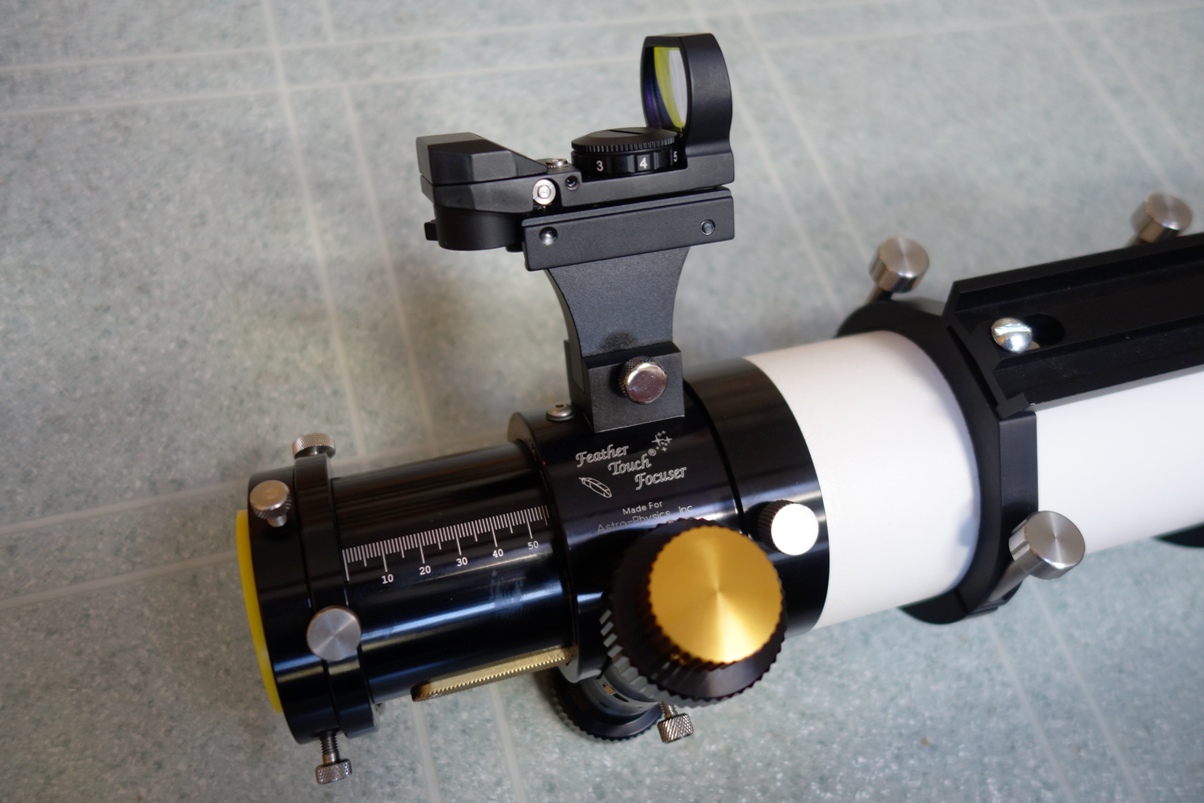
This is the third version of the telescope. Early (and very rare) Stowaways were super-fast at f/5. The second versions were f/7, and were manufactured around the year 2000. These new versions are f/6.65, and feature some updates to accommodate modern users. First, the soft-sided cases of the past (used with the Stowaways and the Traveler) have been replaced by new Pelican hard cases. Those old black A-P soft cases are still highly sought after in their own right, so much so that users didn't want to risk scuffing or tearing them in transport. Many owners wound up buying Pelican cases for their Stowaways anyway. Also, you now have your choice of the traditional A-P dovetail plate, or a Vixen compatible plate. Back in 1999, the Vixen standard was competing with plate width standards from TeleVue, Meade, Losmandy, and others. They had no way of knowing how things would shake out. These days, many to most mid sized telescopes use Vixen style plates, while larger telescopes tend to gravitate towards the Losmandy D-plate. I chose the Vixen style plate, but if I'd picked the A-P plate, it isn't that different from the Vixen and would likely have fit most of my mounts.
Attaching a finder wound up being an adventure. Regular users of Takahashi and Astro-Physics telescopes know that both brands use proprietary mounting hardware. With a Tak, you look at it and know nothing you own is going to fit. On the other hand, A-P scopes fall into that maddening "it almost fits" category. The new Stowaway comes with two sets of mounts for a finder bracket. The mounts are on either side of the focuser to accommodate the left-eyed and the right-eyed. It looks at first glance that your normal finder brackets will fit, but look again - the holes are inline, as opposed to side-by-side. Argh. It almost fits. If you wind up getting A-P's bracket, it looks like your normal finder will slide inside, but it likely won't (none of mine will.) Argh. For the time being, I used the metal red dot finder off one of my other scopes. It works OK, but the bracket is only attached with one screw and the finder itself rocks fore and aft. It'll do for now until I figure something out.
Finally, the new Stowaway comes with fancy Feathertouch focuser with a huge travel range, to accommodate the large variety of eyepieces and cameras users are likely to use with the telescope. When you pull the scope out of the case, the focuser is probably the first thing you are going to notice. There are close to a dozen knobs on it. Having imaged with it for close to a month now, I can report this focuser is a pleasure to use. The only minor drawback is there are so many knobs, I am sometimes afraid I will loosen one of them and drop the diagonal/eyepiece/camera. Lucky for me, this hasn't happened yet.
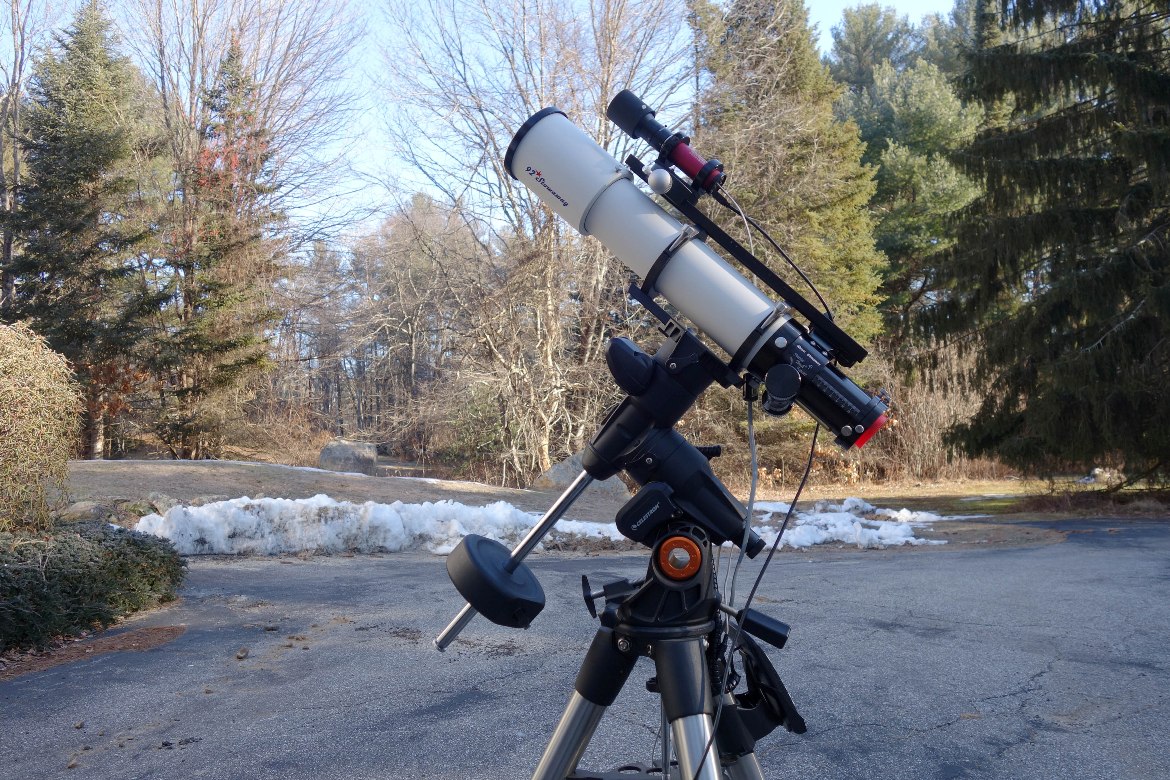
Imaging rig - SBIG autoguider on top
I used the Stowaway a lot in December of 2018. I put it on the CGE and both AVXs for both visual and photographic use. Despite its dense 11 lb weight, the AVX handles it just fine, even for long exposure astrophotography with an autoguider and a heavy DSLR attached. If you use an AVX, a 7lb counterweight is all you need. Be careful using it on a one-armed-bandit style mount like a NexStar, as the fork arm does not have enough height to clear the scope when pointed at the zenith.
There isn't much to say. These A-P refractors, they're about as perfect as you could ask for. I didn't see any false color, and the star test is nearly perfect. The scope has less false color than my FC76, Sky 90, and FS102, and a better star test. I had some friends over to compare it to one of the older f/7 Stowaways and they both reported the newer version had very slightly better color correction, and a very slightly better star test, although I admit I had some trouble seeing this. Both scopes looked superb to me. By the way, if you want to know how exacting these guys are, we spent over an hour just looking at Iota Cass. The new scope took longer to cool down than the older version, and it took longer to cool down than my FS60, FC76, , Sky90, and FS102.
Aside from the exacting observing, I had loads of fun just looking around at the winter objects. Aside from the crowd pleasers like M42, M45, M31, and the rest, the scope excelled at low contrast objects. I've said many times that my best view of the Lagoon Nebula (M8) was through an FC76 with a UHC filter, and the memory of that view is a big reason why I have an FC76 today. I stand by that statement, but now I am eagerly awaiting summertime so I can look at it again through the Stowaway. M33 is usually singled out as a test for contrast. I still get emails from beginners who insist this object is incorrectly plotted on their star atlases. The atlas shows a giant blob, as large as M31 but face-on. What the atlas does not show is how low the contrast is on M33. It is imperative to get away from city lights to have a chance at seeing it. Once that is done, you can attack the problem in two ways. Either hit it with a lot of aperture, or use a telescope with unusually good contrast. From my driveway, where I can just barely see all seven stars in the Little Dipper, M33 starts to take on some structure, and starts showing some of the HII regions, with an 11 mm Type 6 Nagler.
Looking with low contrast objects, I could pick out hints of the North America, the California, and the Rosette. Not too bad for a small scope.As luck would have it, fellow club member "Old Dan" also got his notification and received his Stowaway a few weeks after I got mine. He sent me these notes from initial observations:
________________________
Stowaway
report:
1.
I did not test cool down time. The scope was in the three-season
room from 5:30-7:30pm.
a.
Polaris easily split at 56x (11mm Nagler).
b.
Double Cluster were tiny diamonds at 56x and 87x (7mm Nagler).
c.
Alpha Persei Cluster (aka Melotte 20) extremely sharp at 26x (24mm Panoptic).
d.
Gamma Andromedae split at 87x with beautiful colors; awesome at 175x
(3.5mm Nagler). I wanted to compare the 3.5mm to an University Optics
4mm Ortho but clouds ended the session.
_______________________
Vs the Takahashi Sky 90
Along with the TMB92 and its variants, the Takahashi Sky 90 (and Sky 90 II) were two of the first serious imitators/challengers to the original Stowaway. Regular readers of this site know that I am a huge Takahashi fan (I currently own five of their refractors and I use them all) but the Sky 90 is not one of their better models. They have the reputation of falling out of collimation easily. All three of the ones I've owned have had this problem with varying degrees. What's worse, the scope does not have a collimatable lens cell, so you have to spend hundreds to get it realigned. If you use the scope a lot, it will inevitably fall out of collimation again. The Sky 90's biggest calling card is its fast f/5.6 focal ratio. Attach the dedicated focal reducer and it goes down to a blazing fast f/4.5 at 407 mm. Frames that would have taken 6-7 minutes get cut in half. Also (and this highly subjective) I think the Sky 90 is the most attractive refractor Takahashi has ever made. It's short and stout and heavy and looks like it means business. When I have my refractors lined up, the Sky 90 is where my eye naturally falls.
This was not much of a contest. The Sky 90 had a worse star test and some minor false color. And that's not just compared to the Stowaway. It fared worse that the FS60, the FC76, the FS102, and my cheap Astro-Tech AT72.
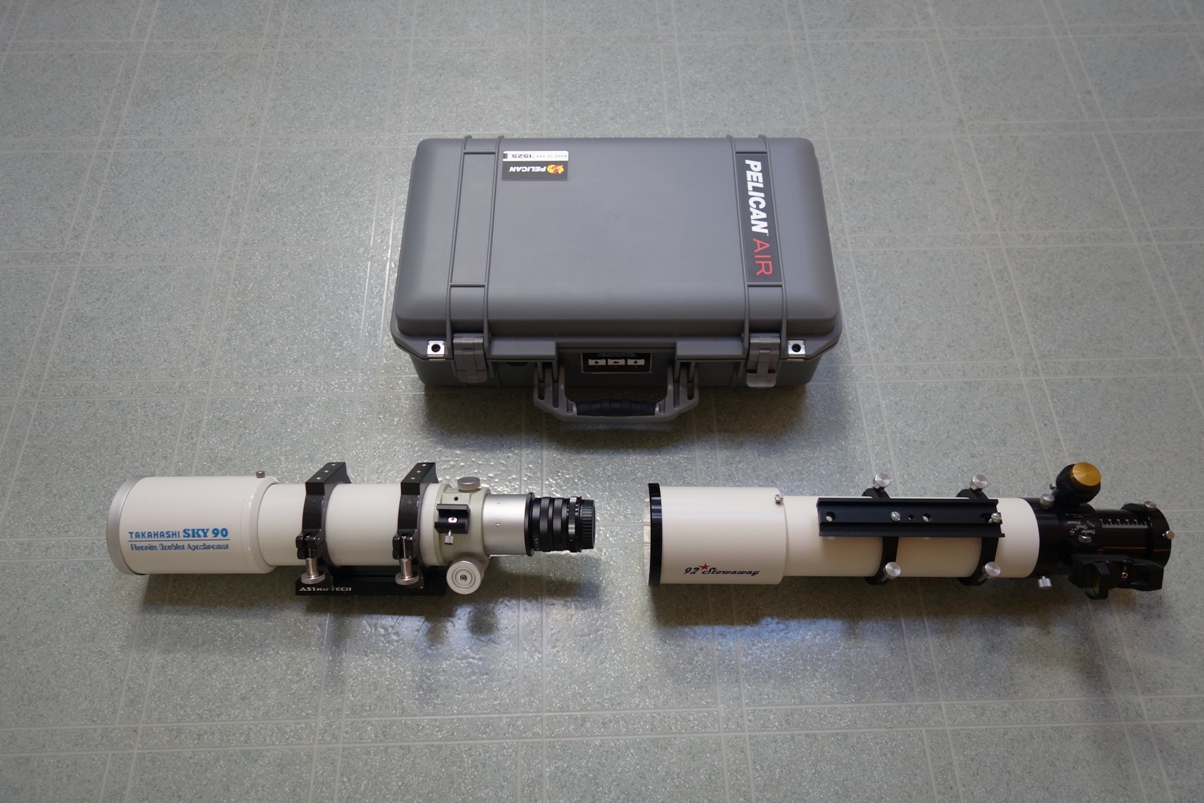
I used the ASI120MM and did a comparison on the moon. These are both stitches of 2 individual images. They were taken within minutes of each other and processed the same way in Registax. It is important not to read too much into tests like these. The camera seems to exaggerate differences between telescopes. But at least it's something to look at for comparison. The Sky90 is slightly softer than the Stowaway. You can see this visually too but it's hard to see unless you have both side by side.
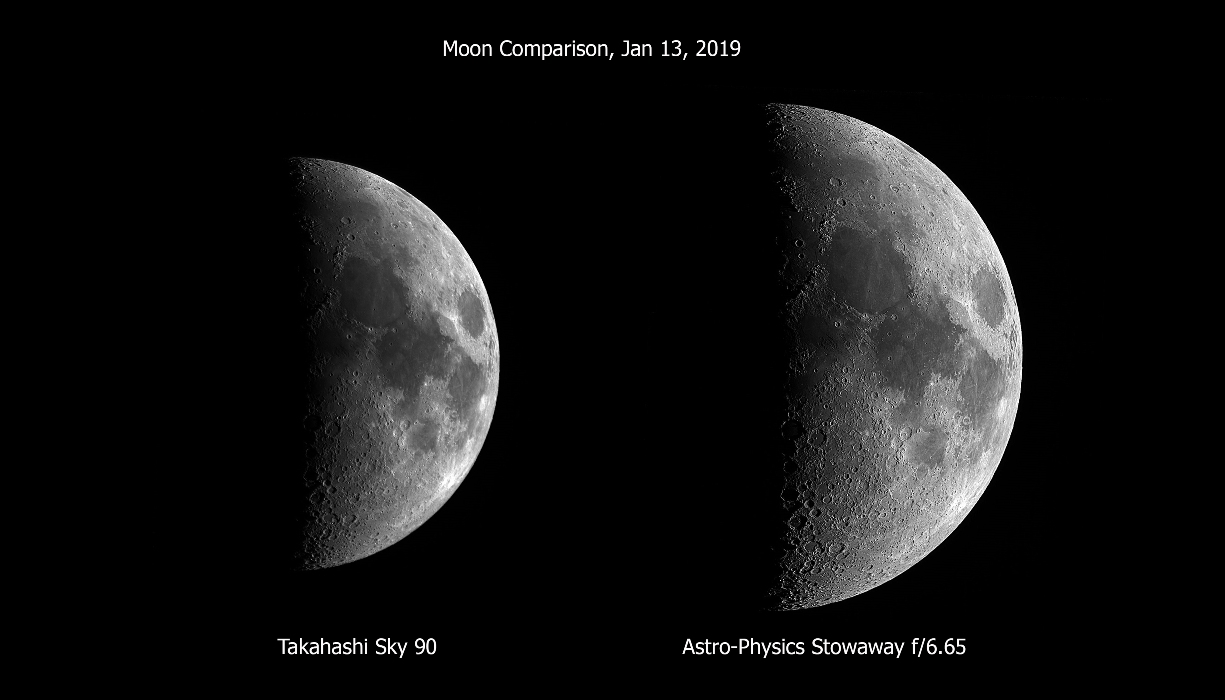
Update, 2/17/19: I implied above that the Sky 90 cannot be collimated. This is, of course, incorrect (I have made this same misstatement a number of times on this site now.) Unscrewing the dew shield reveals two retaining rings. The first one threads off by hand, but you may need a spanner to remove the inner ring. Taking off the dew shield also reveals a number of recessed allen bolts that can be used to collimate the lens, assuming you know what you are doing.
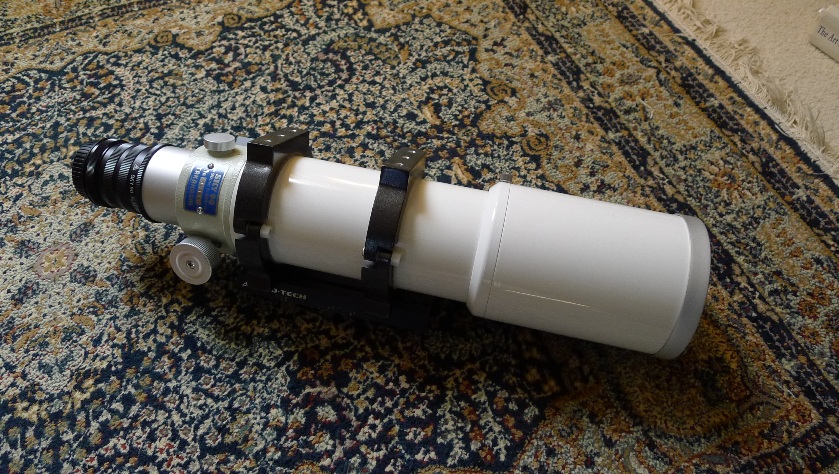
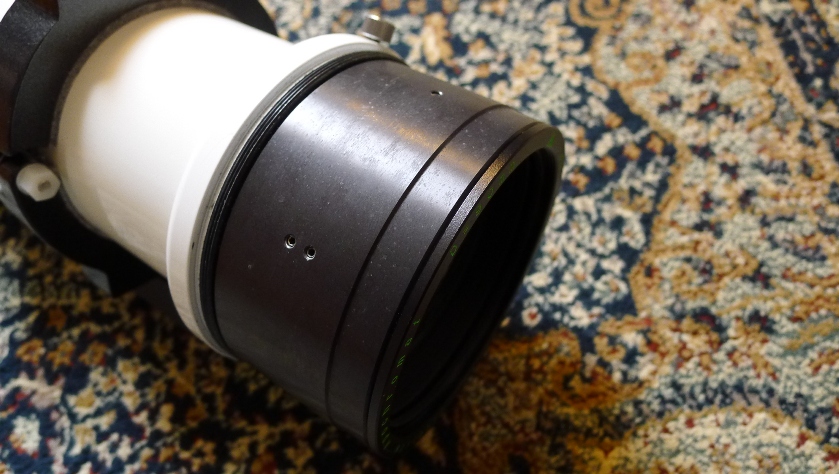
Mine has three pairs of these bolts spaced 120 degrees apart, but newer versions may have more. I intended to play briefly with these but then stopped. While inspecting the lens, I noticed two minor chips at the edges, spaced 120 degrees apart, and the chips did not match up to any of the screws. So at some point, a previous owner had attempted to collimate the lens, and tightened something down too far.
One quick-and-dirty method for collimating a refractor is to loosen everything up, place the scope vertical (lens up and focuser down) and gently tap the sides of the tube. The hope is that everything settles into place (my club mates and I have "collimated" innumerable Short Tube 80s this way.) In this case, I got mixed results.
Vs a generic 90 mm achromat
I read car magazines for the Ferrari and Lamborghini reviews, knowing I will likely never be able to drive one. In the same vein, most readers here will never see an Astro-Physics Stowaway. Which begs the question - how does a rare premium apochromat compare to a 90 mm achromat owned by the average Joe? I compared the A-P to a "Polaris by Meade" 90 mm f/11 achromat ($100-$200 street) but I could have used any of the generic units from Orion, Celestron, or the others. The achromat's focuser wasn't nearly as nice as the Feathertouch of course, and you notice it right away. Direct optical comparisons were difficult to achieve due to the achromat's long focal length, but the Meade showed minor undercorrection and some false color. The false color was nearly invisible as long as I looked the stars dimmer than about magnitude 3. Look at Sirius, and you see the purple halo right away. Same thing with the limb of the moon.
The Stowaway split Castor with a 13 mm Type 6 Nagler at 47X (this is really low to be doing this by the way.) On the Meade, I needed to go to the 11 mm Nagler (~91X) to get a clean split. On showpiece deep sky objects at low power, the Meade did just fine. I hadn't looked through an inexpensive achromat in some time and had forgotten how good these can be. One difference I noticed was with the aforementioned low contrast objects like M33. The blacker skies and higher contrast of the Stowaway made M33 peek out more easily than with the Meade, although the Meade did find it. I came away with a new appreciation for the mass-produced achromat. Could I live with this scope? As long as I'm not imaging and also have something bigger (like an 8" Dobsonian) to hunt down dimmer targets, I think the answer might be yes. Throw in the fact that I have seen 80 mm and 90 mm achromats selling for next to nothing on the used market, and you have an easy decision if you are in the market for one. Having said that, I like low power sweeping, so in addition to the achromat and the 8" Dob, I would eventually look for a short f/ratio apo (not necessarily a premium one) for imaging.
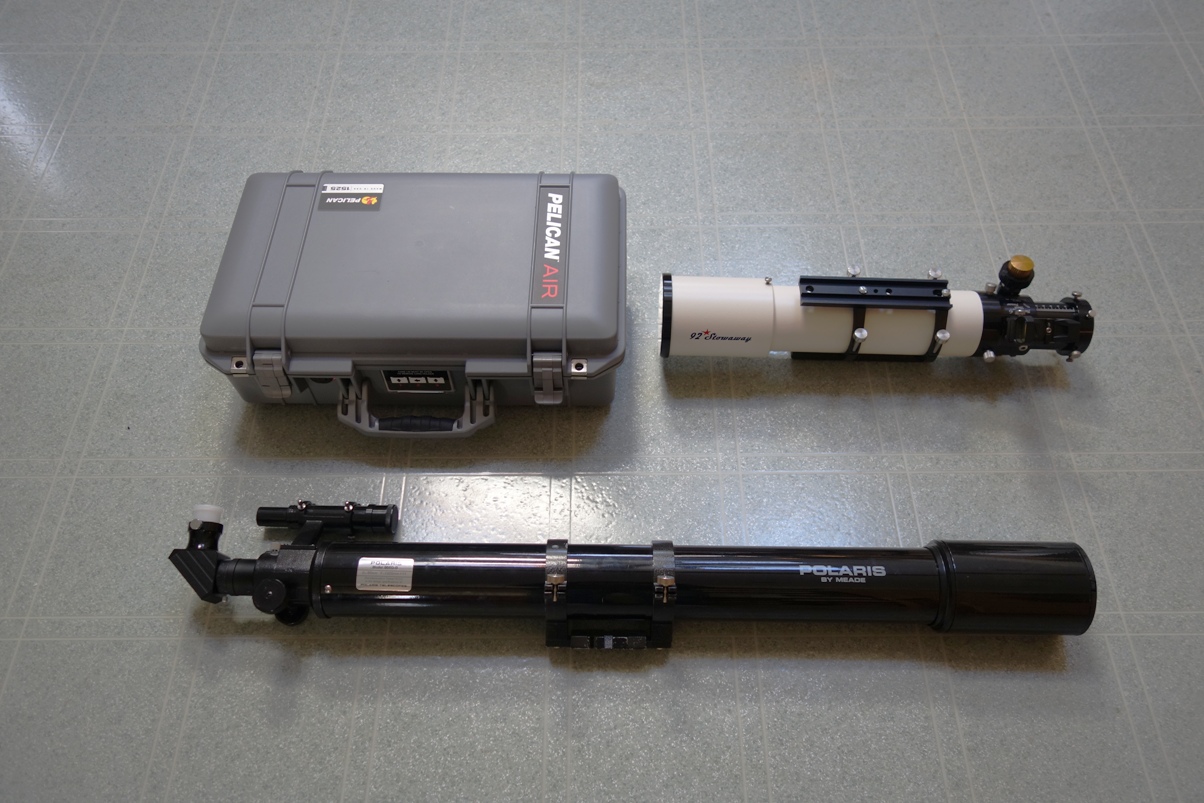
I ran the same test on the moon. Here again, it is important not to read too much into this test. Cameras pick up the scattered light from an achromat far better than the human eye; I have gotten used to seeing this slightly "foggy" effect from imaging the moon through an achromat. The live difference was not that great. Still, you can see a noticeable difference in sharpness and contrast through the apo. Both images were taken within minutes of one another and processed using the same profile in Registax.
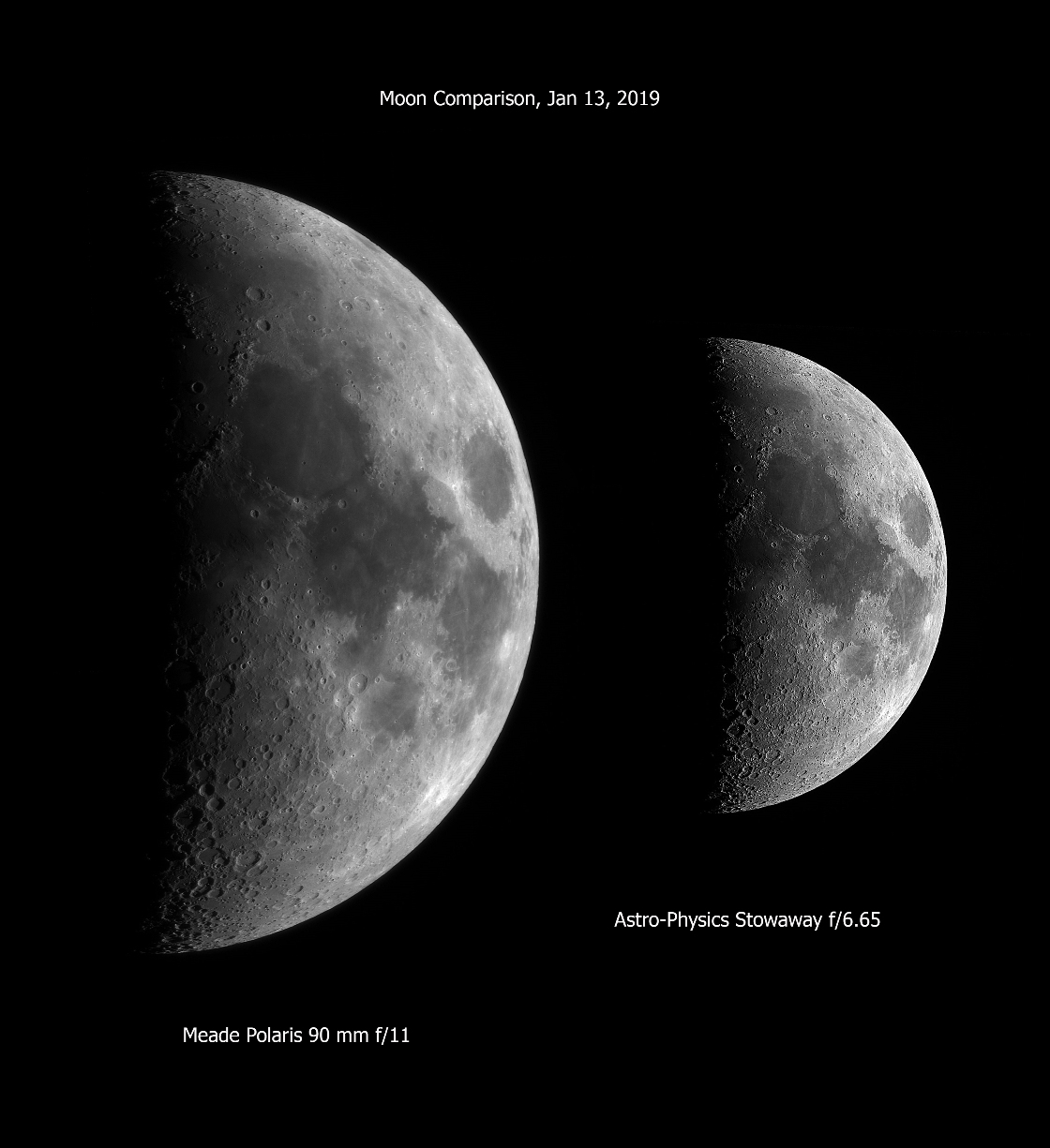
It may be hard to make direct comparisons due to the larger image scale of the achromat, so I went into Photoshop and reduced its image so that they match. Here we need to issue an even greater caution as there is another layer of manipulation to the achromat. But if you're curious, here's the result.
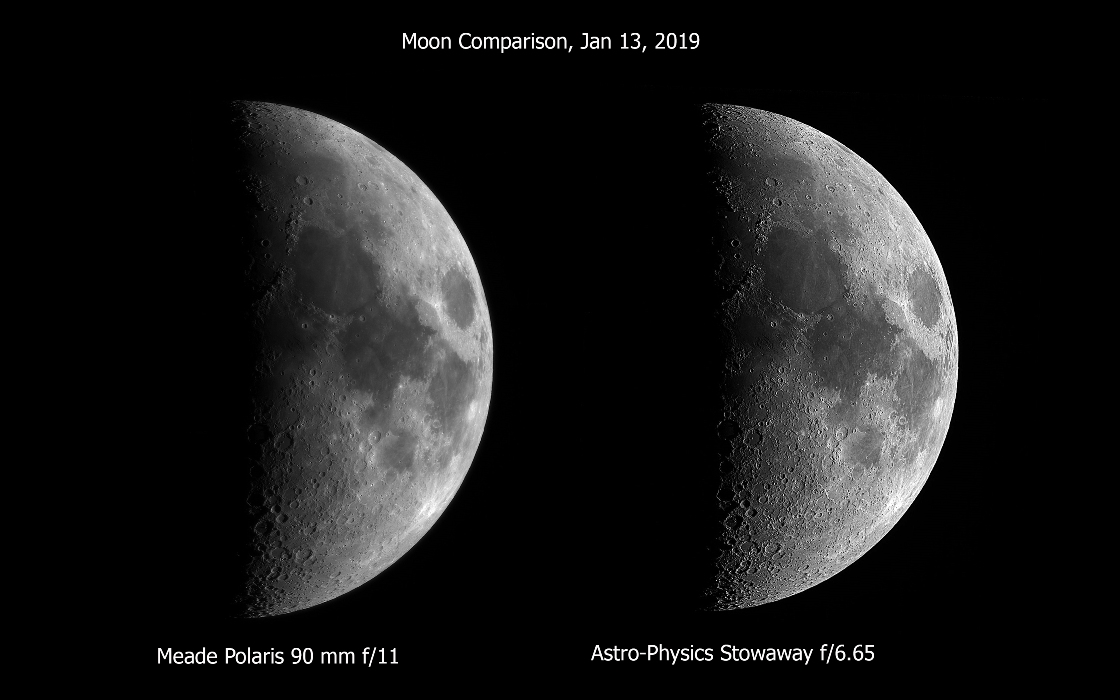
Vs the f/7 Stowaway
I compared the new f/6.65 Stowaway with the older f/7 version from about 1999. The differences were really, really small. As noted before, two club members thought the new version had a slightly better star test and slightly less false color, but I had trouble seeing these. The ~20 year old design more than holds up. It was only when I started imaging that I saw some differences in practical use. The old scope's focuser, while world-class for its day, is starting to show its age. It only has one set screw for the diagonal or camera. The big problem I found is the old focuser didn't have much focus travel. The older Stowaway was built in a time before big monster eyepieces, let alone for the huge variation in astro cameras. When I attached my modded EOS 5D Mk III to the scope, the focuser would not come out enough to reach focus. I had to borrow a 2" extension tube from a club member. Using the ASI120MM/MC cameras, I needed two extension tubes to reach focus. The focuser is not rotatable, so you have to unclamp, manually rotate your camera/diagonal, and then reclamp. The one set screw does not inspire confidence. When imaging through the scope with the 5D, I got nervous and placed a pile of pillows and blankets underneath the scope, just in case.
The older scope is clearly from another era. Other than the writing on the focuser, there is nothing on it to call attention to itself. The dew shield is a little short, and on one cold night of imaging, the lens did manage to frost over. The rings have flat spots on the bottom to fit a plate, but there are no tapped holes or a flat spot on the top. Unlike the new version, there are no holes on the visual back to mount a finder (hence the Rigel Quik Finder on the top of this one.) Despite this, I like the simple clean lines of the old version, and from a purely aesthetic viewpoint, I think I actually prefer it.
Update, 1/30/19: There has been some discussion over the years about the exact focal ratio of the these "f/7" Stowaways. There are claims the scope is somewhat faster than advertised. I reached out to Astro-Physics on this matter and received the following response:
>>The old Stowaway had a focal length of 630mm and was rated at 90mm clear aperture. That would make it a 90mm F7. However, the retaining ring clear aperture was a little bit larger with a 92mm opening, so the actual focal ratio was F6.8 or thereabouts. The actual focal length varied somewhat depending on the glass batch and could have varied by +- 5mm. Only precise measurements using a calibrated image of a star-field would produce the exact values for focal length and subsequent F-ratio.
We never worried about it because F-ratio has no meaning for visual astronomy. And since eyepieces can have up to 10% variation in their focal length, the power of scope and eyepiece can vary quite a lot. It is something that nobody should ever worry about.
Roland<<
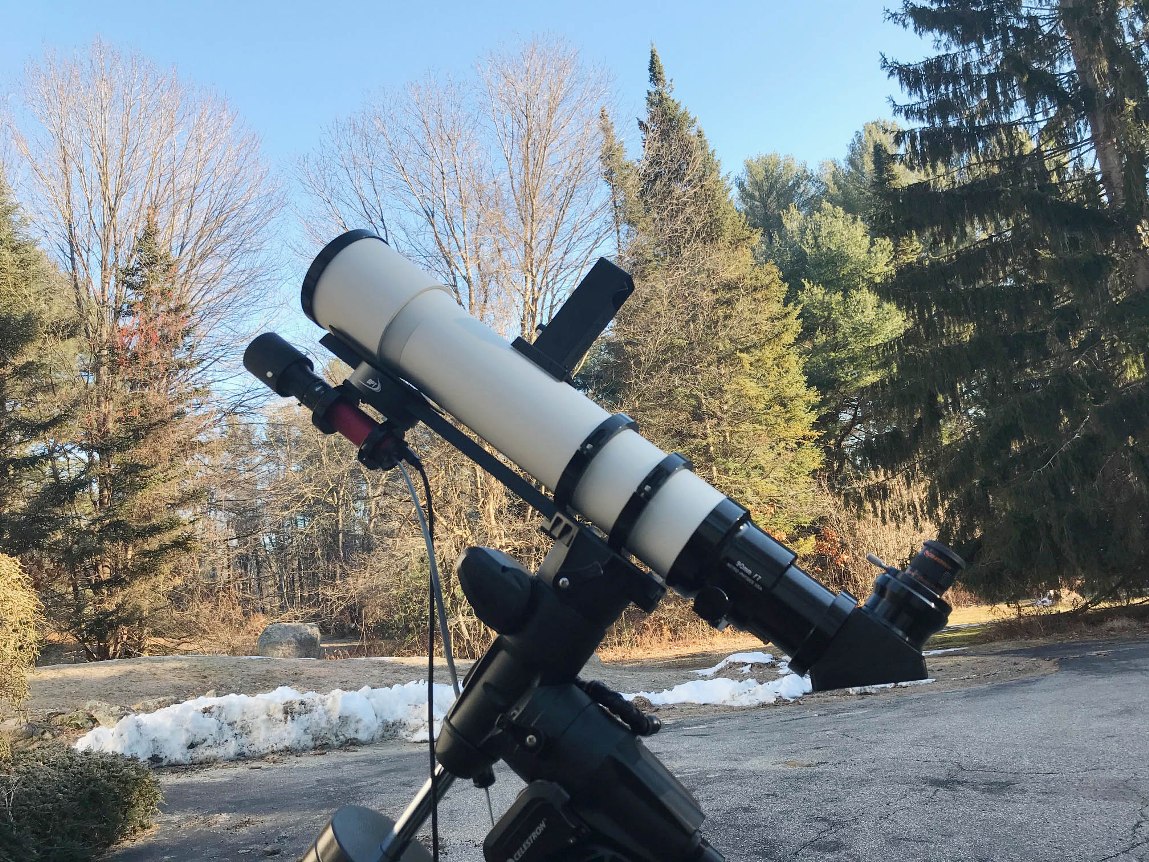
The original f/7 Stowaway, set up for imaging
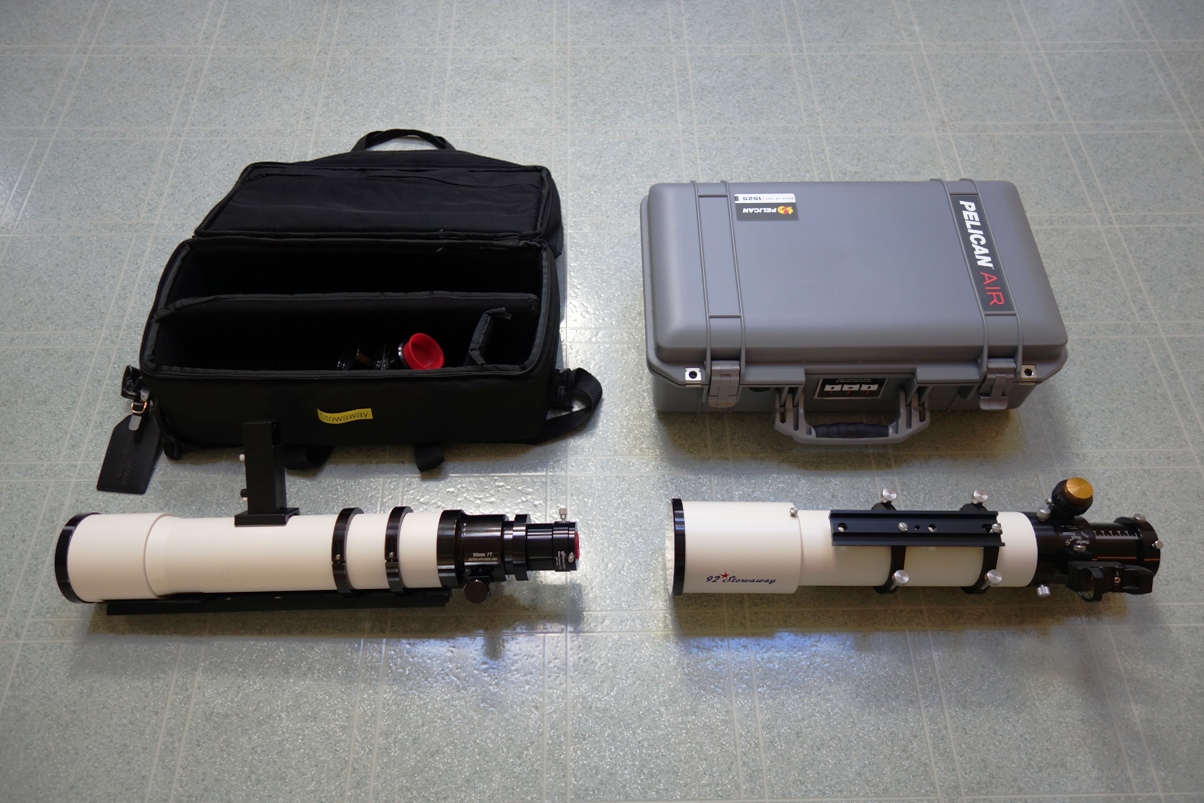
Stowaways with cases, old (L) and new (R)
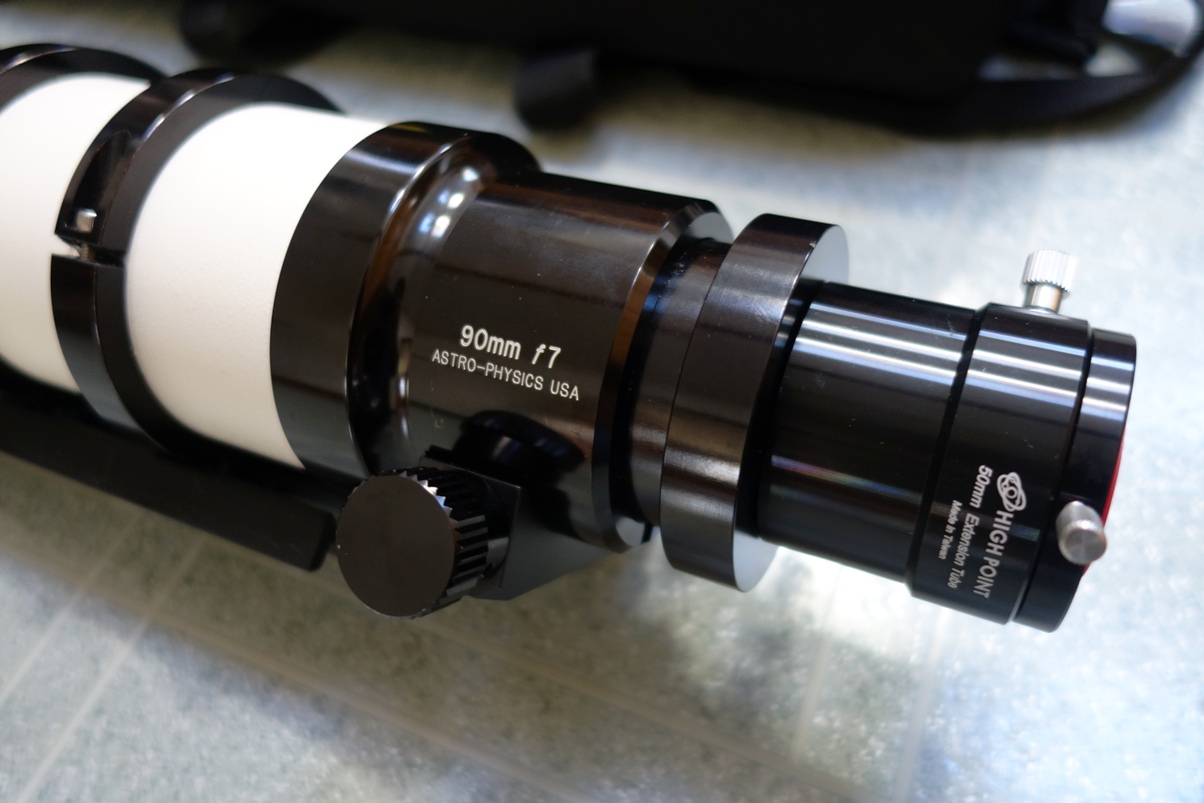
Detail on f/7 Stowaway focuser. Note the use of the extension tube.
As with the other scopes, I ran some tests on the new vs old on the moon. The images were taken within minutes of one another on two consecutive nights, with the same settings in FireCapture and processed with the same wavelet profile in Registax. Again, I will stop short of calling this a scientific test, as the atmosphere may have changed conditions, even in the minutes separating the captures. Each of these moon images is a stitched mosaic of 3 individual images combined in ICE. Keep in mind when you view these, the visual difference was not nearly as large as what you are seeing here.
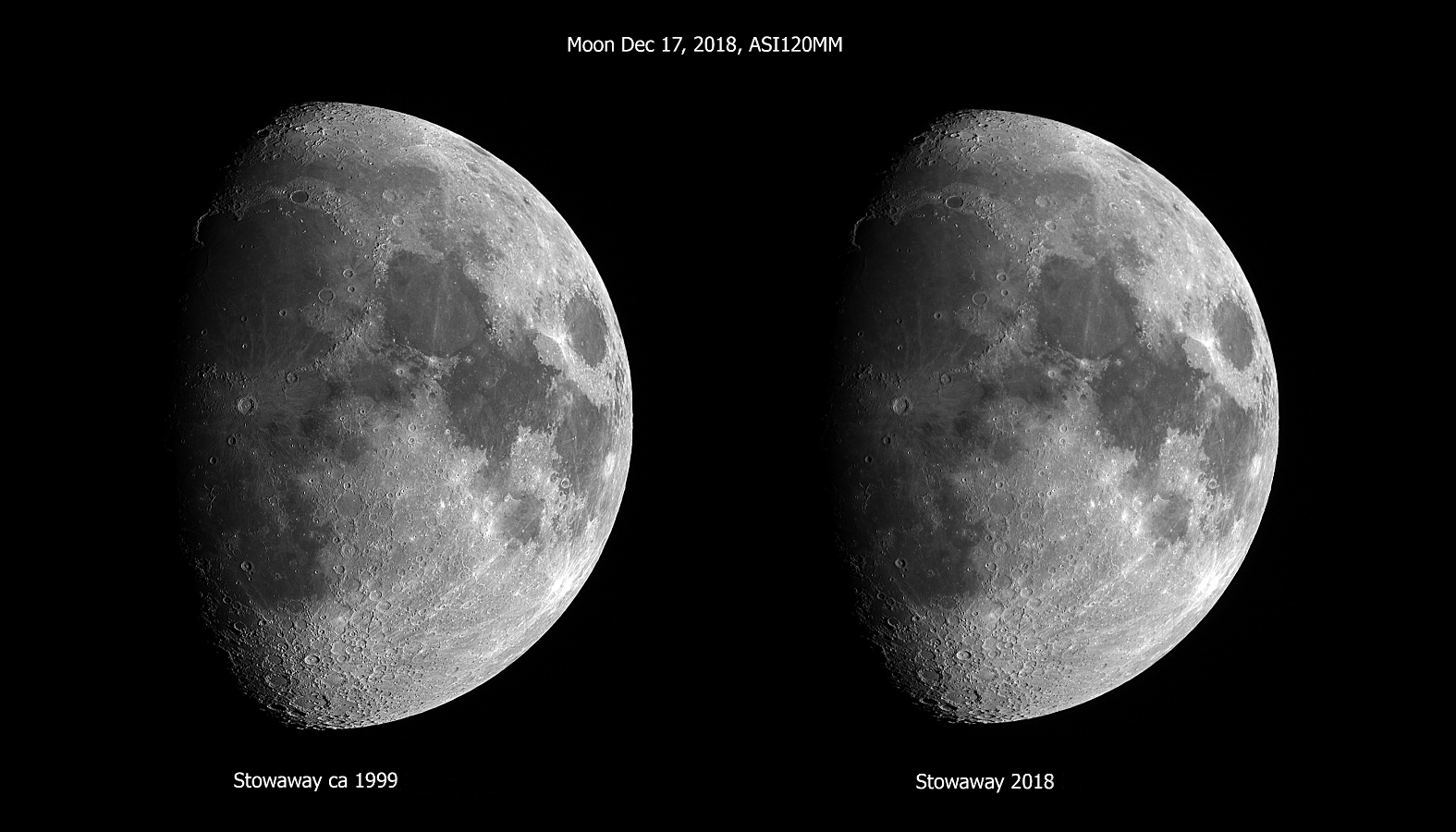
Dec 17th, 2018. Which do you prefer?
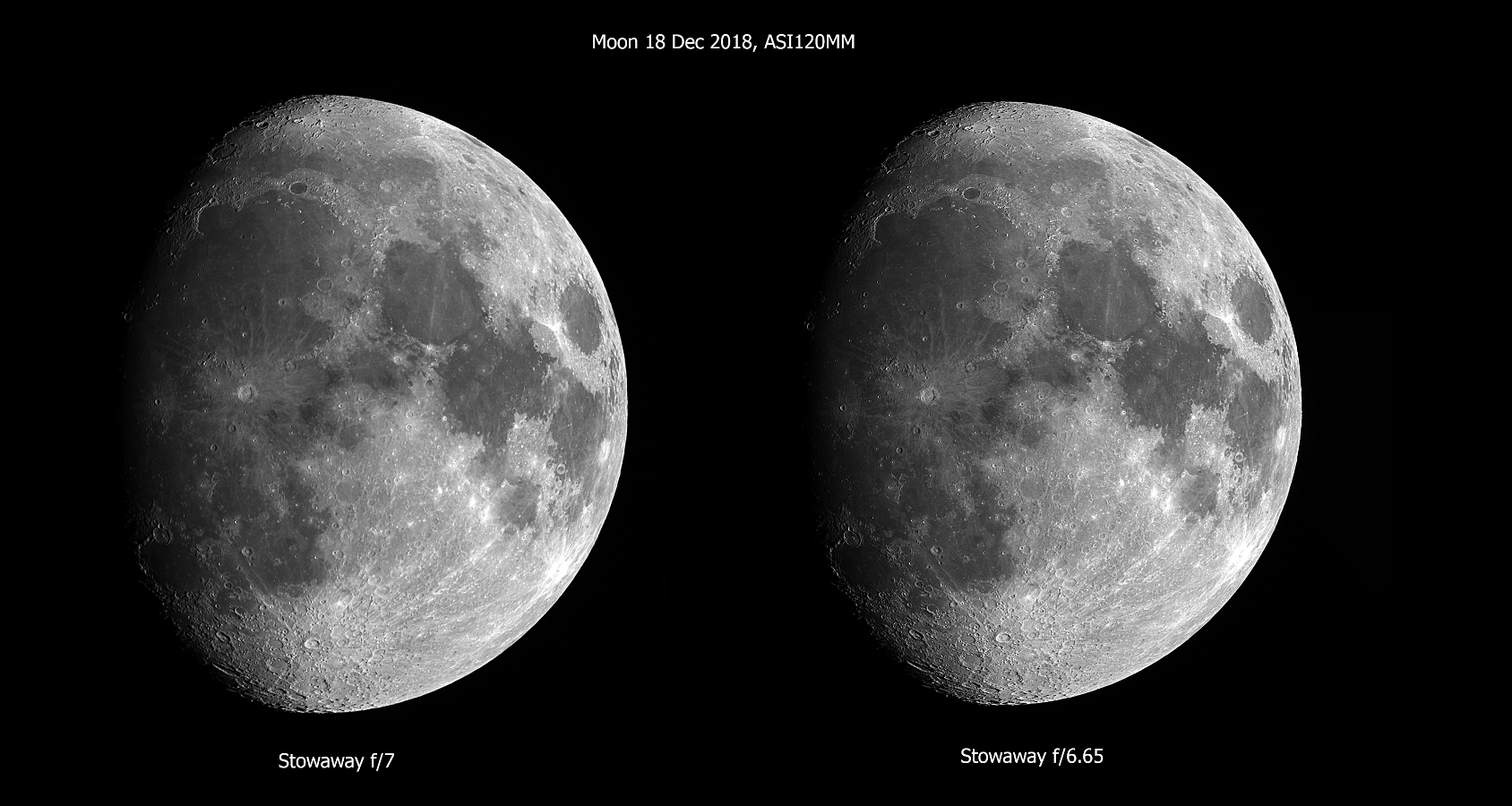
Dec 18th, 2018. Which do you prefer?
Again, when viewing the above, note that on both nights, I couldn't see any difference between the two scopes when I look through them.
What conclusions should I make? I said yes to both Dartmouth and to the Stowaway (and yes, to the home repairs) and am happy with the decisions so far. Those were the right answers for me. Should the same choices befall you, the correct decisions for you may vary. All I can say is, the Stowaway is a fulfillment of a twenty-year long quest, and I am glad to have found closure with this portion of my life.
______________________
(Note: All the images on this review have been reduced. If you want any of the full-sized images, email me.)
Image Gallery. All are from a HuTech modded EOS Mk III, AVX or CGE mount, SBIG Sti-c autoguider, PHD2, Deep Sky Stacker, CS6. While I have the field flattener on order, it will be another 8 weeks before it ships. In these images I used an Astro-Tech field flattener. I'll report back when I get the official field flattener from A-P.
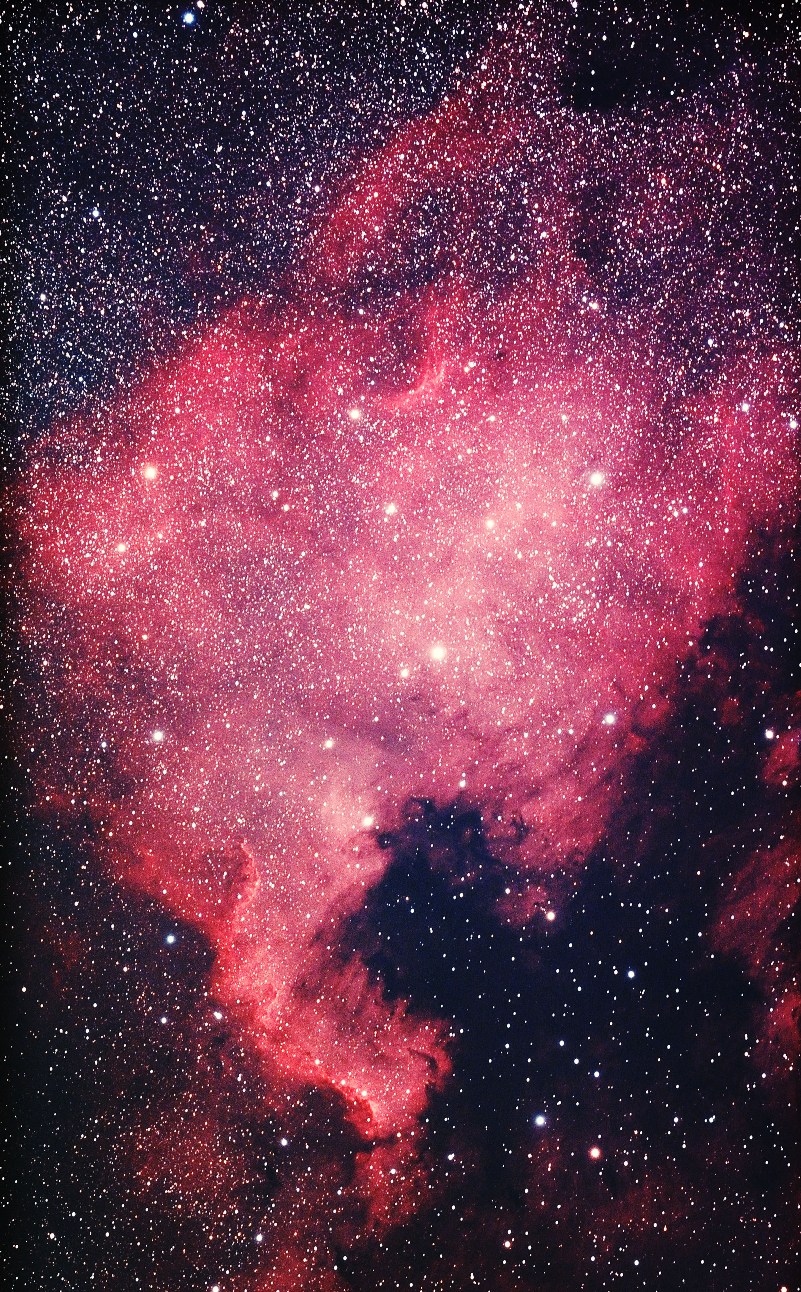
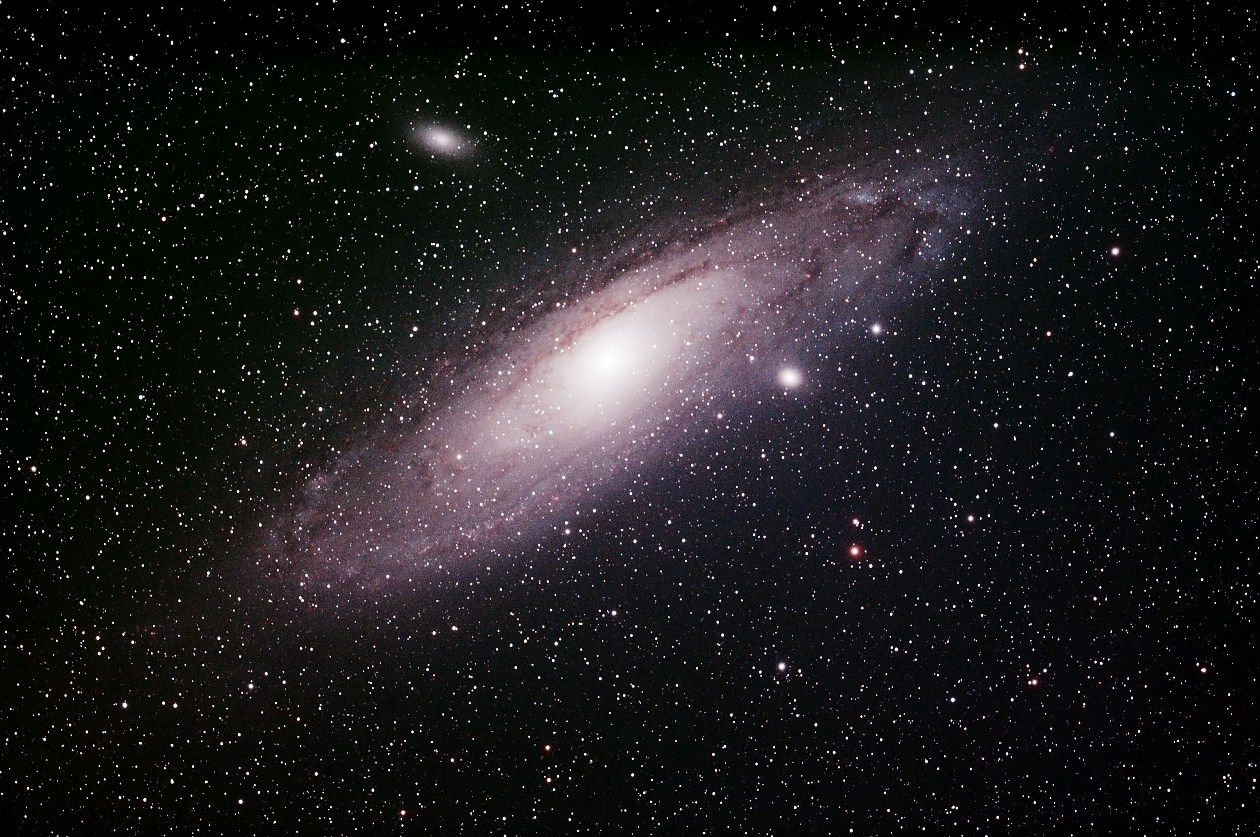
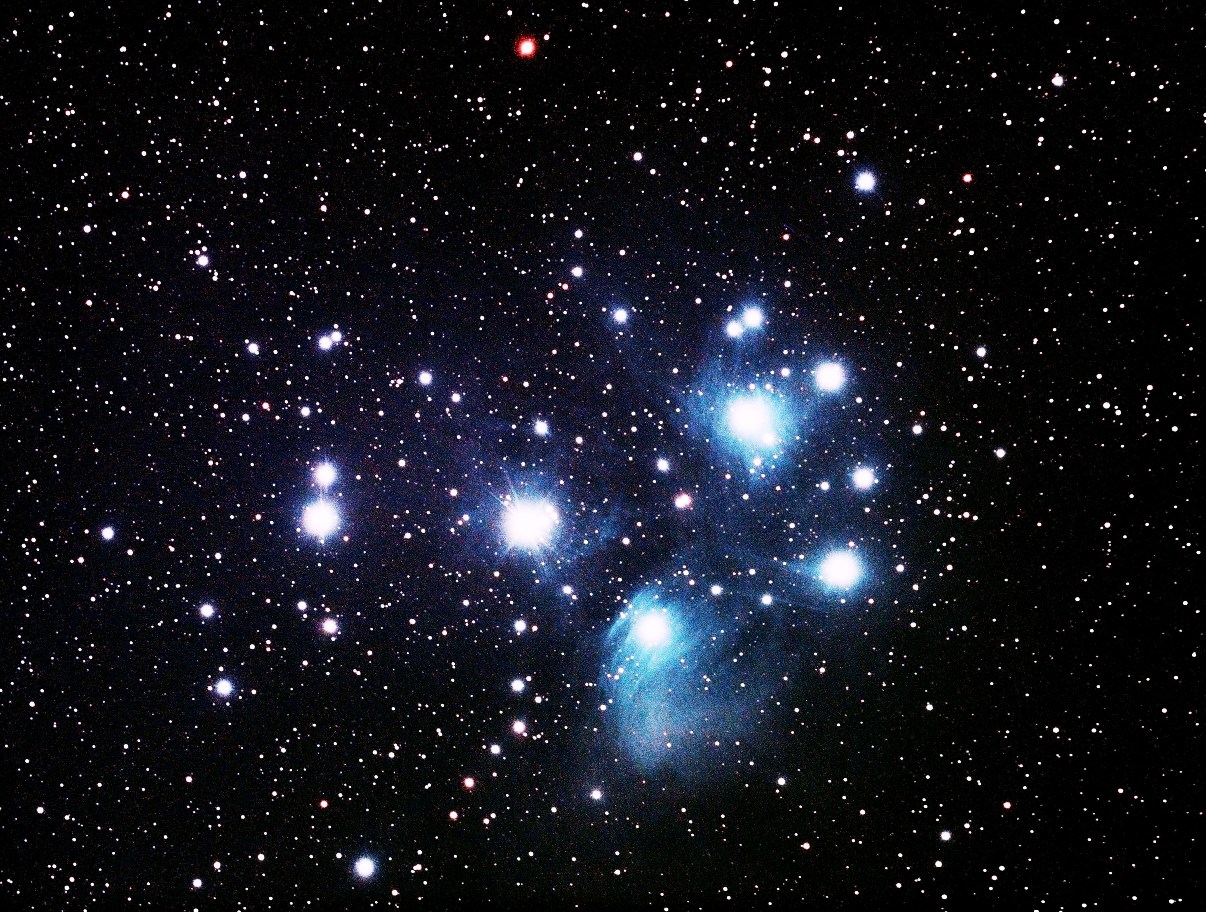
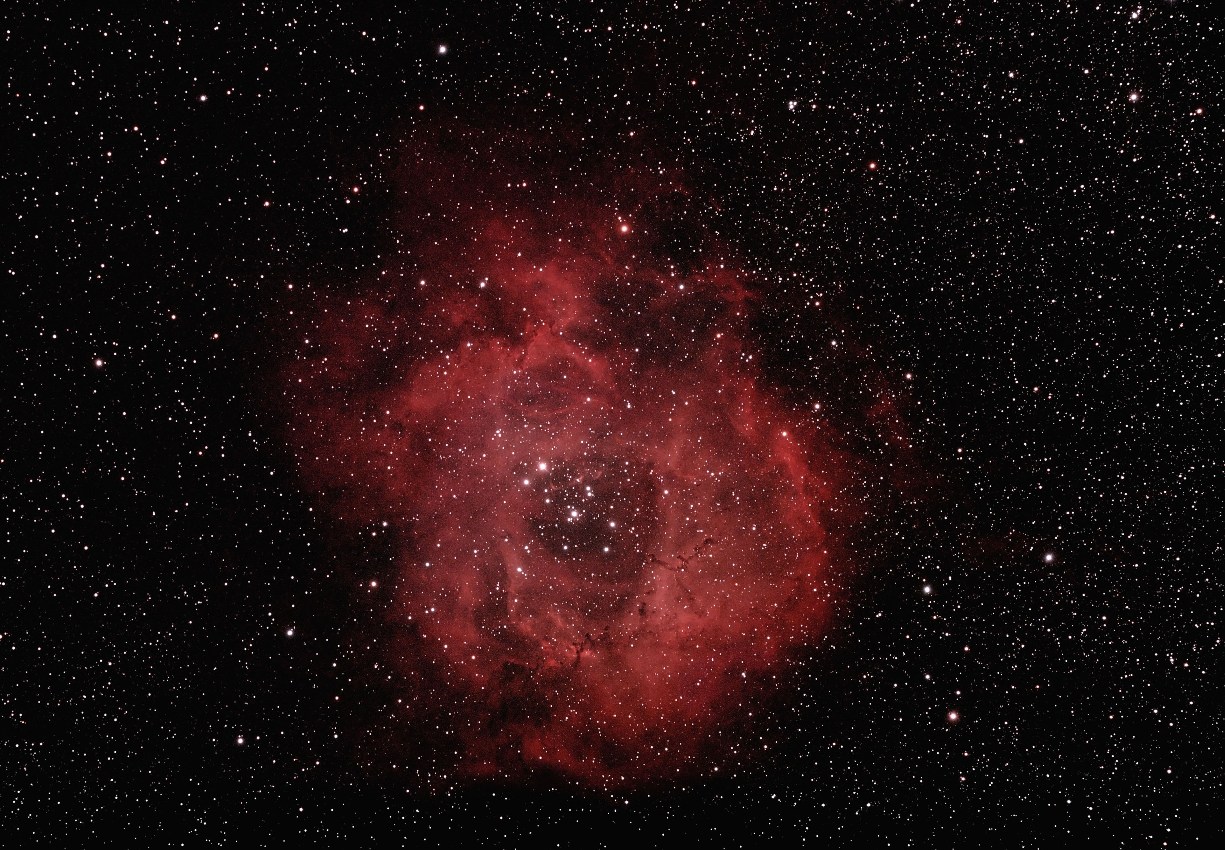
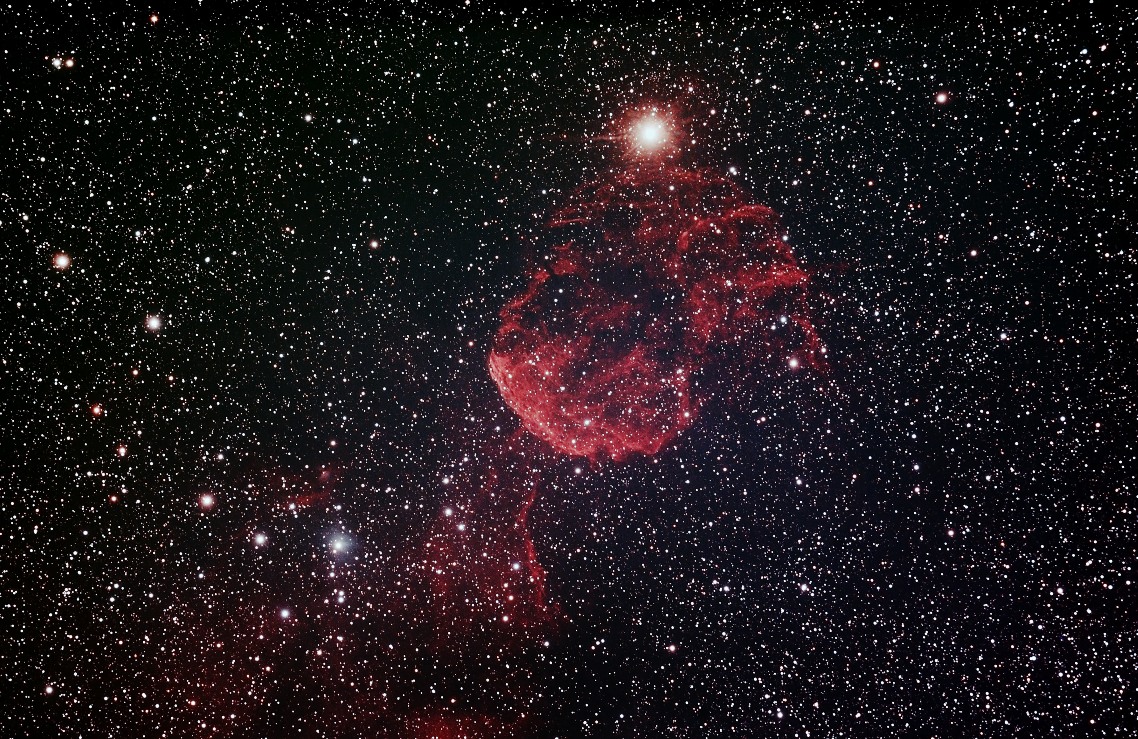
...and for good measure, a couple taken through the older f/7 Stowaway (same equipment otherwise)
